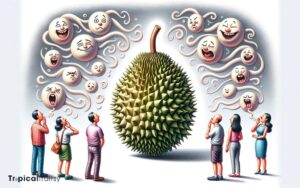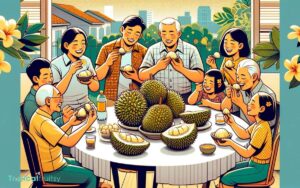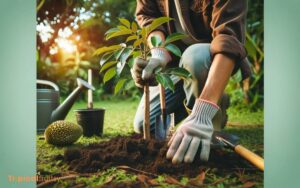When Is Durian Season in Thailand? Peak Delight!
The durian season in Thailand typically spans from April to August, with the peak season falling between May and June, offering the best quality and variety of durian fruits.
The durian season in Thailand aligns with the country’s warm climate and monsoon patterns.
These factors contribute to the fruit’s development and ripeness:
Savoring Thai durians during the peak season ensures the most flavorful experience of this exotic ‘King of Fruits.’
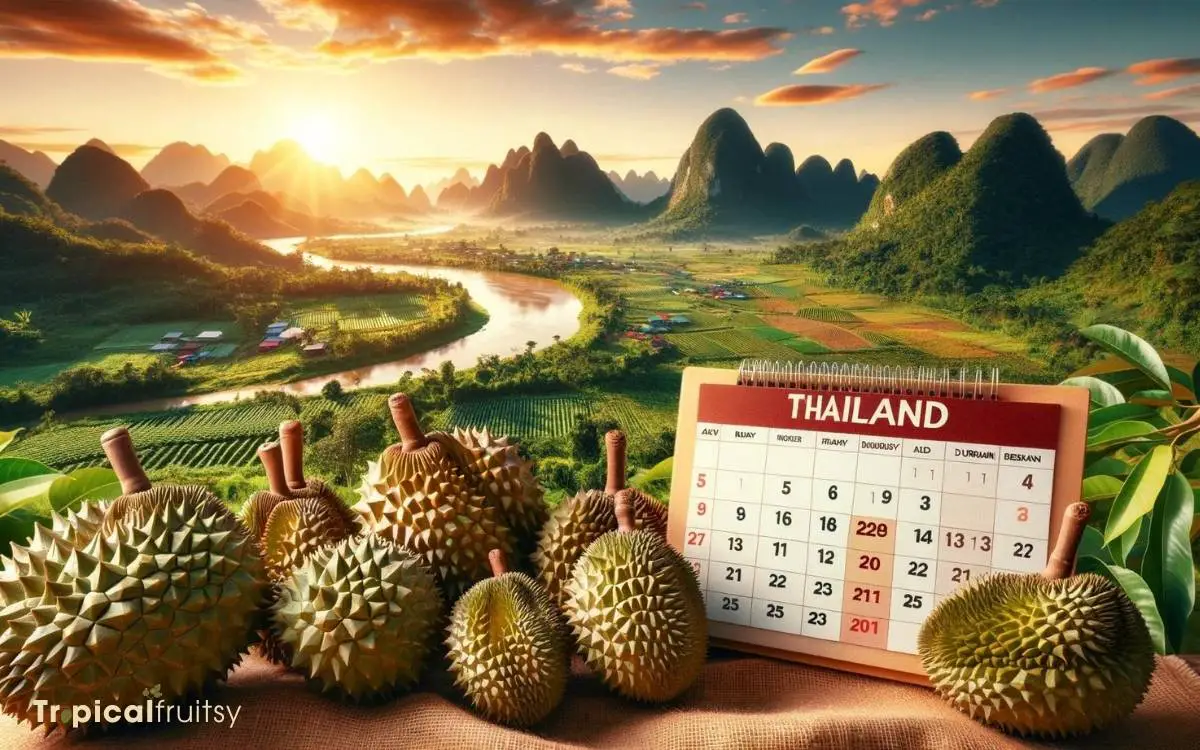
Key Takeaway
Durian Season Timeline in Thailand: Best Times for the King of Fruits
| Month | Durian Season Status | Varieties Available |
|---|---|---|
| April | Early Season | Early-ripening varieties |
| May – June | Peak Season | Wide selection, best quality |
| July – August | Late Season | Limited availability |
Understanding Durian Varieties
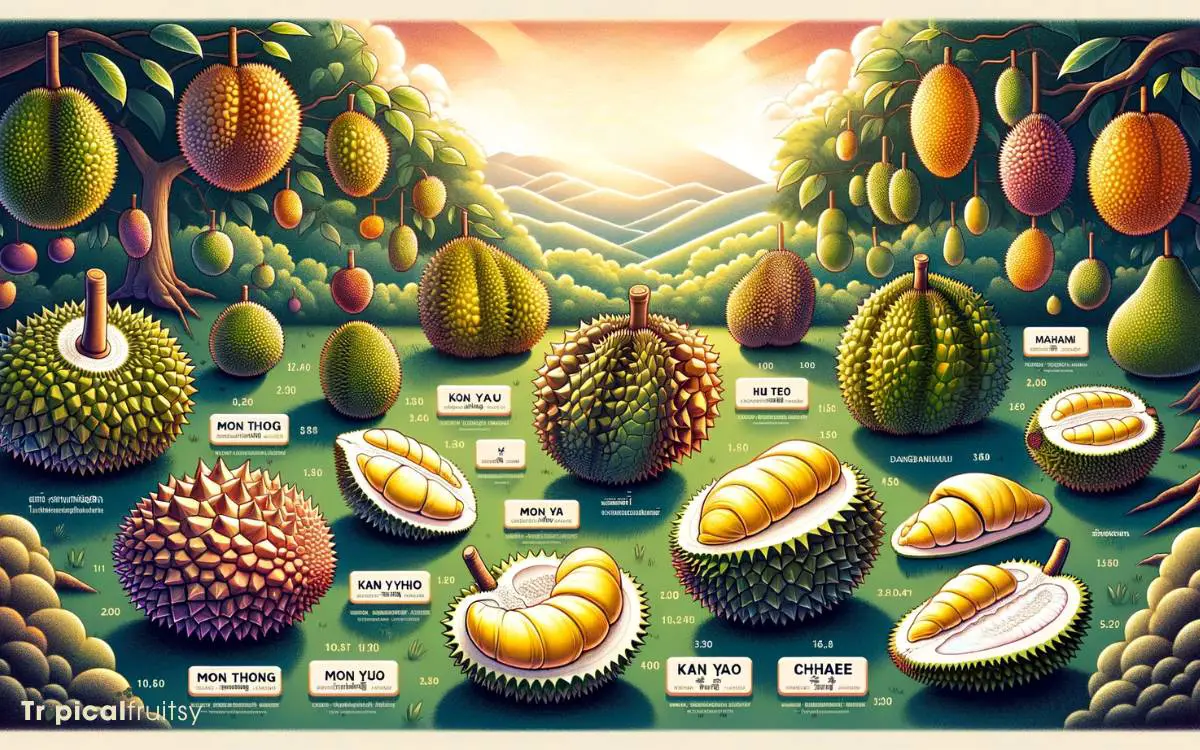
Thailand’s durian season offers a plethora of varieties, each with its unique taste and texture, that cater to the preferences of both locals and tourists alike.
Among the most sought-after cultivars is the ‘Monthong’, lauded for its creamy consistency and moderately sweet flavor.
The ‘Chanee’ variety, distinguished by its higher sugar content and firmer flesh, is another favored choice.
Connoisseurs also seek out the ‘Kradum Thong’ for its delicate balance of sweetness and subtle bitterness.
Additionally, the ‘Gaan Yao’ is notable for its elongated shape and exceptionally rich and custardy pulp.
Understanding the nuanced differences in flavor profiles, ripening times, and texture among these varieties is crucial for both consumers and cultivators within the durian market ecosystem.
Thailand’s Climate and Durian
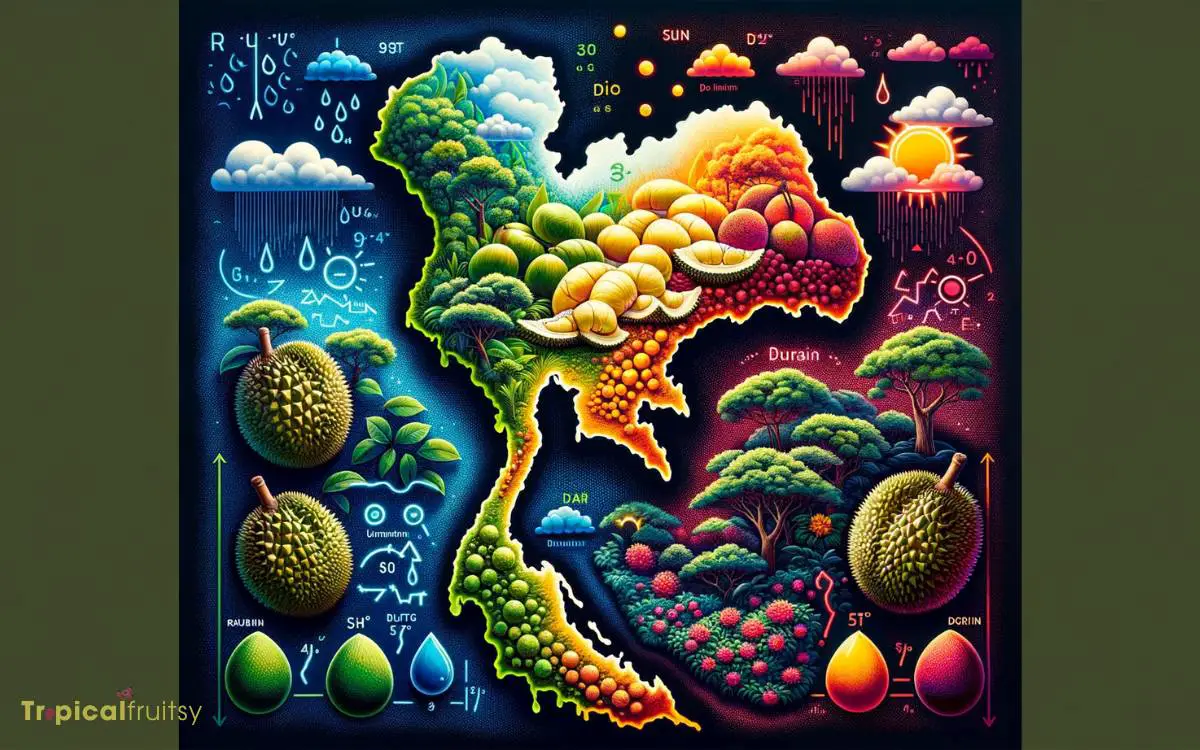
Understanding Thailand’s climate is imperative for determining the optimal period for durian cultivation, as the fruit thrives in the warm, tropical conditions prevalent across the country.
Thailand’s climate is characterized by high humidity, substantial rainfall, and temperatures that consistently hover between 25°C and 35°C.
These climatic elements combine to create an environment conducive to the growth of durian trees, which demand well-drained, fertile soils and ample moisture.
The seasonal cycle, comprising a rainy period followed by a dry season, influences the phenological stages of durian trees, from flowering to fruit development. Precise agricultural practices align with these climatic patterns to maximize yield and fruit quality.
With this understanding of the relationship between Thailand’s climate and durian growth, we can now examine the start of durian season and its regional variations.
The Start of Durian Season
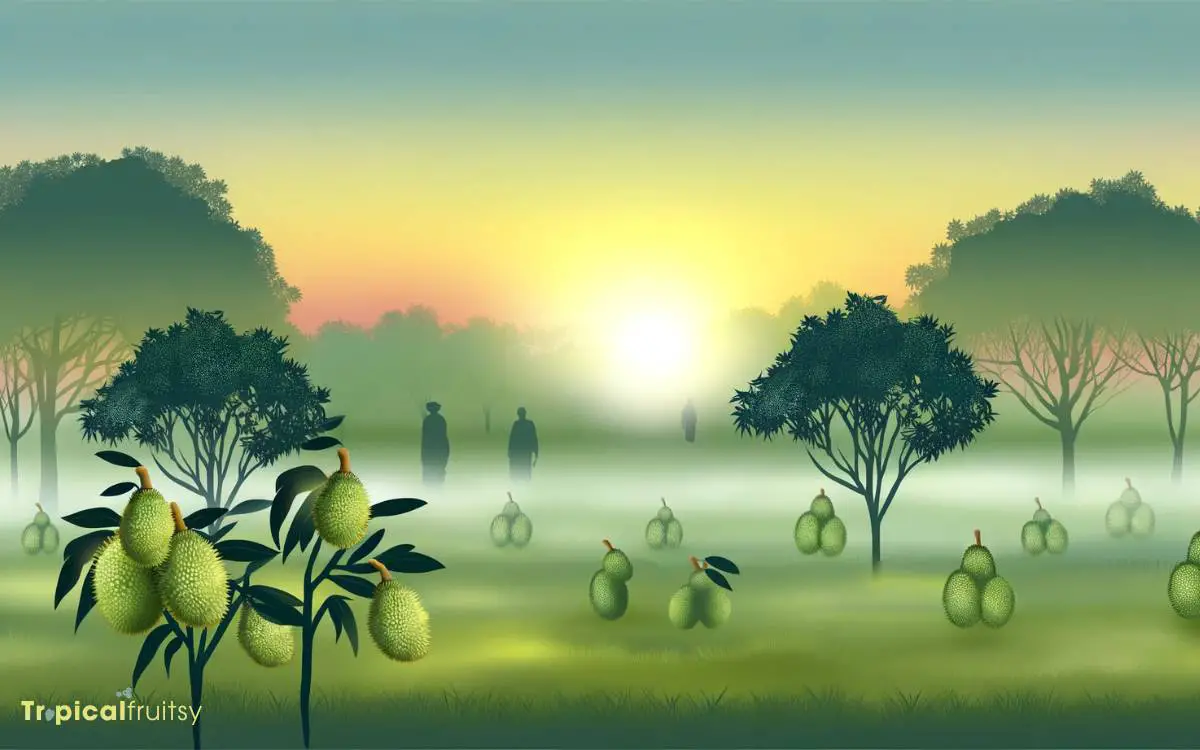
The commencement of durian season in Thailand is marked by a transition in climatic conditions, typically aligning with the onset of the warmer months.
Variations in temperature, humidity, and rainfall patterns exert a significant influence on the phenological stages of durian trees, thus determining the availability of the fruit.
The seasonal peak months for durian harvest are observed between April and July, when optimal climatic conditions prevail for fruit development.
Seasonal Peak Months
During the months of April to June, Thailand experiences the peak season for durian, marking the commencement of the nation’s most anticipated period for durian enthusiasts.
This seasonality is primarily due to:
Climatic Conditions:
- Optimal rainfall during the preceding months
- Adequate sunshine facilitating photosynthesis and fruit maturation
Agricultural Practices:
- Pruning and fertilization techniques timed to optimize yield
- Integrated pest management ensuring healthy crops
Harvesting Techniques:
- Manual selection for maturity and quality
- Strategic timing to meet both domestic demand and export quotas
These factors collectively ensure the availability of premium durians with desirable texture, flavor, and aroma, meeting the sophisticated palates of consumers and maintaining Thailand’s reputation as a premier durian producer.
Climate Influence
Climate conditions play a pivotal role in determining the onset of durian season in Thailand.
The season typically commences when the convergence of adequate rainfall, soil moisture levels, and warm temperatures stimulate the durian trees to blossom and subsequently bear fruit.
These climatic factors collectively create an optimal environment for durian cultivation, leading to the much-anticipated annual fruiting season.
| Climate Factor | Influence on Durian Season |
|---|---|
| Rainfall | Triggers flowering and initial fruit set |
| Temperature | Affects growth rate and fruit development |
| Soil Moisture | Ensures sufficient hydration for trees |
Precise meteorological patterns are monitored to predict the season’s start, which can vary slightly each year.
Agronomists and durian enthusiasts alike scrutinize these climatic indicators to forecast peak seasonality and fruit availability.
Peak Durian Harvesting Period
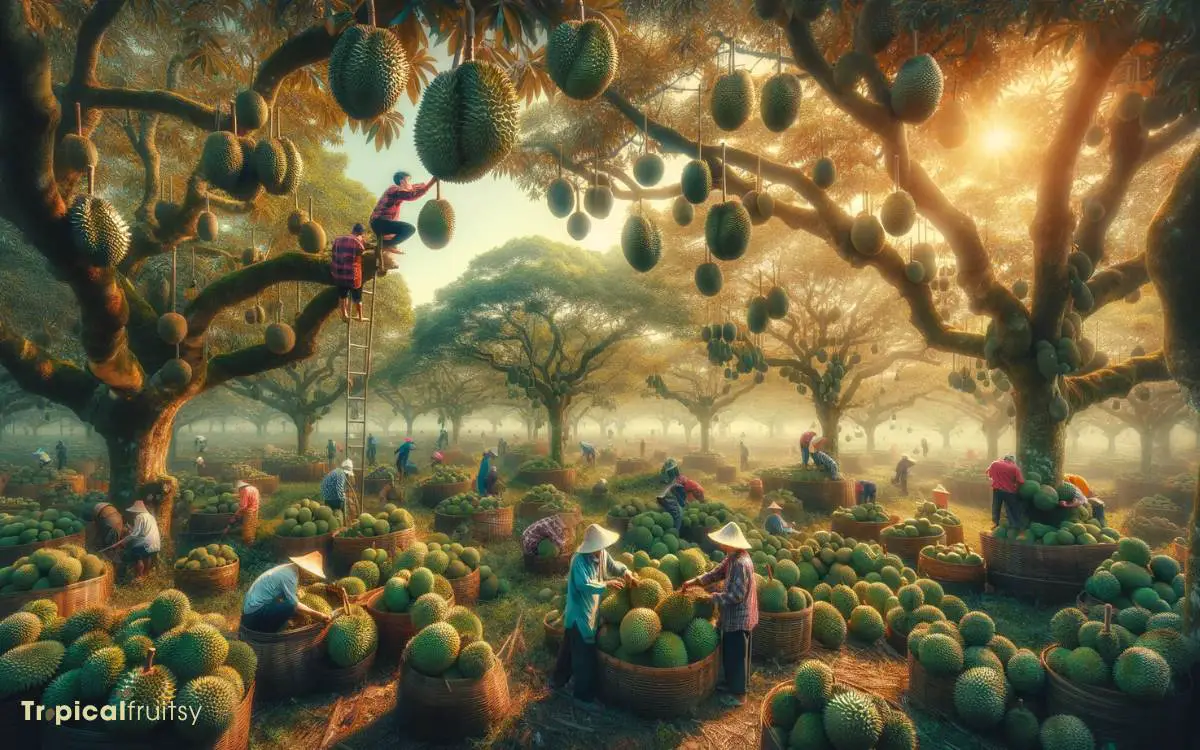
Peak durian harvesting period in Thailand typically spans from April to June, coinciding with the onset of the rainy season.
During these months, a confluence of climatic factors contribute to the proliferation of durian fruit, resulting in the peak yield of the season.
Climatic Conditions:
- Increased rainfall
- Warmer temperatures
- Optimal soil moisture levels
Harvesting Techniques:
- Manual picking when fruit exhibits mature characteristics
- Use of specialized equipment to ensure quality
Distribution:
- Domestic markets receive first priority
- Export processes are expedited to deliver fresh durian globally
Horticultural practices and meticulous timing are essential for maximizing the harvest while maintaining the fruit’s distinctive flavor profile.
As the peak season concludes, attention shifts to the late season durian availability, where mature fruits can still be sourced, albeit in smaller quantities.
Late Season Durian Availability

Transitioning from the peak durian season, Thailand offers late season durian availability typically from July to September, catering to enthusiasts seeking the fruit beyond the prime harvesting months.
During this late season, the durian varieties such as Chanee and Monthong can still be found, though the yield is generally reduced, and the fruit may exhibit slight variations in flavor and texture.
Agronomists note that the late-season durians often depend on the climatic conditions and may be subject to more variability.
Connoisseurs may appreciate the subtle differences that late-season conditions impart to these durians. For visitors planning their itineraries, understanding the nuances of late-season availability ensures a fruitful experience.
To maximize the opportunity for an immersive experience, one should consider the best times for durian tours.
Best Times for Durian Tours
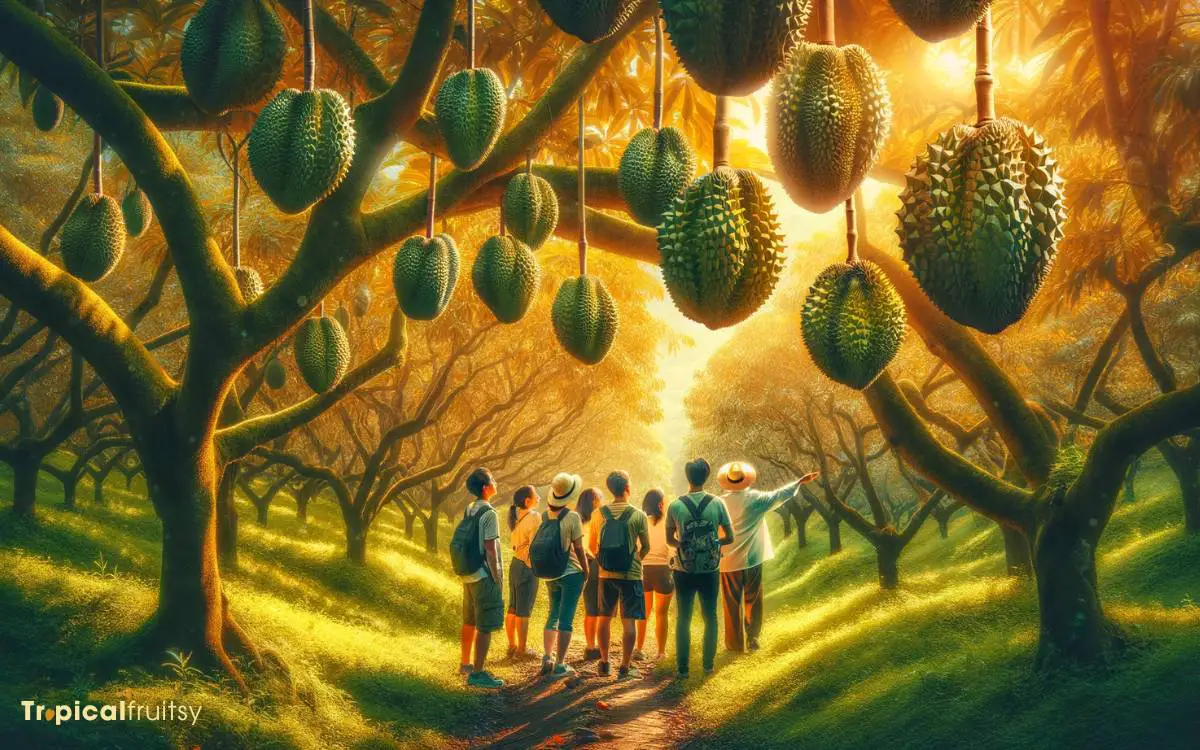
For enthusiasts aiming to experience the richness of durian season in Thailand, the optimal period for tours coincides with the peak production months.
It is advisable to schedule visits between June and August, when the availability of various durian cultivars is at its highest.
Tourists should consider advanced booking strategies to ensure access to prime orchards and comprehensive tasting experiences during this high-demand period.
Peak Season Months
The majority of durian varieties in Thailand reach their optimal maturity between May and July, providing the ideal window for durian-themed excursions.
During this period, the fruit’s organoleptic properties, such as texture, aroma, and flavor, are at their peak, offering an unmatched sensory experience for connoisseurs and enthusiasts alike.
May to July:
- Peak Durian Season
- Optimal maturity of durian varieties
- Heightened sensory experience
- Increased availability for tours
It is during these months that the biochemical processes within the durian fruit culminate in the development of its characteristic taste profile.
The climatic conditions prevalent in Thailand’s durian-growing regions contribute to the fruit’s quality, making this period particularly conducive for durian tourism.
There is a plethora of orchards providing guided tours and tastings, allowing visitors to fully immerse themselves in the world of durian.
Tour Booking Tips
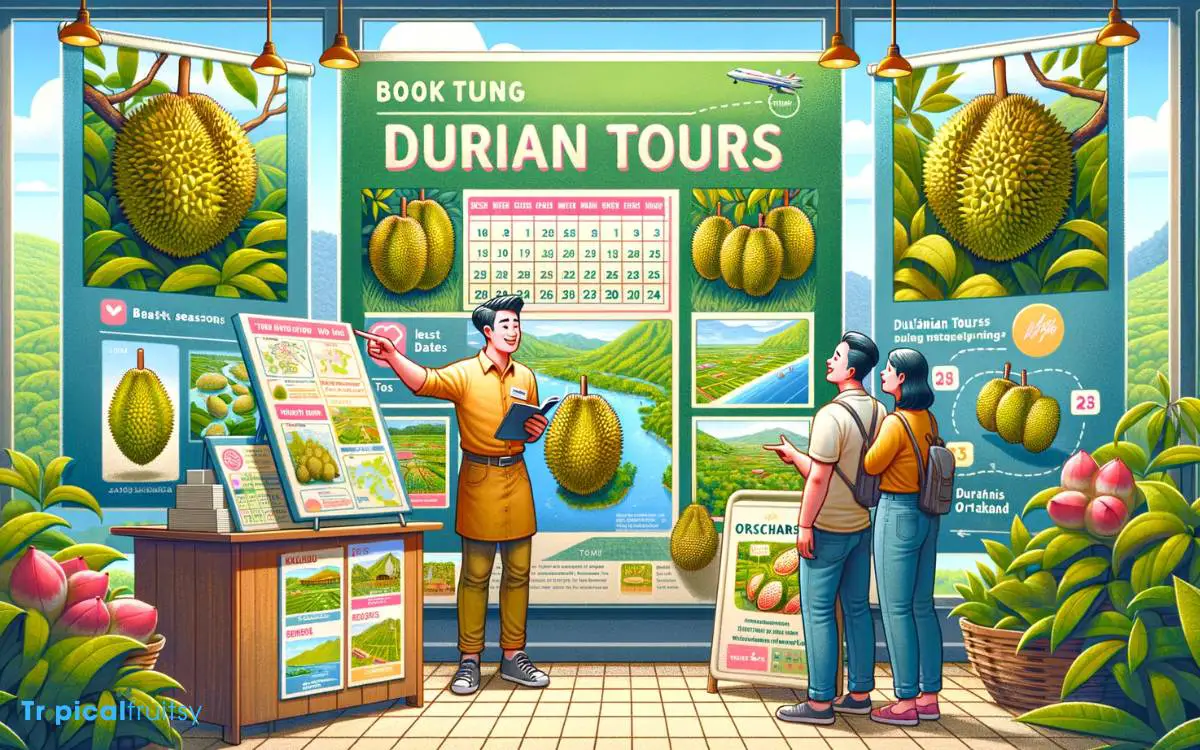
To maximize the durian-tasting experience, visitors should consider booking their tours several weeks in advance, particularly for the May to July peak season.
Securing a reservation during this period is crucial as demand for durian-related activities surges, potentially leading to scarcity of availability.
Prospective tour participants are advised to engage with reputable tour operators who offer specialized itineraries that encompass orchard visits, tasting sessions, and educational components about durian cultivation and harvest.
Moreover, when booking, one must meticulously review the tour details to ensure they align with personal preferences regarding the extent of durian exposure and other cultural experiences included.
Flexibility in travel plans can also be beneficial, as tour operators may offer advantageous last-minute openings due to cancellations, albeit such opportunities are rare during the high season.
Conclusion
The cyclical progression of durian season in Thailand, from the onset in April to the zenith in June and the gradual wane through August, mirrors the ebb and flow of a symphony.
Each phase plays a distinct note in the sensory orchestra of taste and aroma.
Enthusiasts and connoisseurs seeking the pinnacle of durian experience are well-advised to time their ventures with this natural crescendo, ensuring an encounter with the King of Fruits at its peak splendor.


